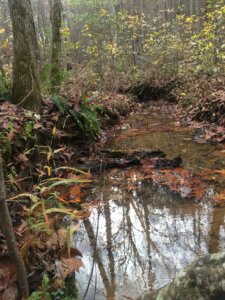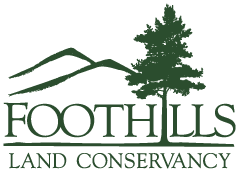Project #154Bench Road, Pikeville, TN 37367
Acre: 748.98
Property Type: Forest Land

View of Sequatchie Valley from Property
The Nature Conservancy considers the Cumberland Plateau and Escarpment to be “one of the most biologically rich regions on Earth, rivaling the biodiversity of tropical rainforests.” So it was with great delight to us that the Basin Mountain project offered us the chance explore the Cumberland Escarpment itself. The escarpment is the dramatic geological feature that you see through-out Middle TN when you cross on and off the Cumberland Plateau, and is defined by sudden sheer cliffs and rock outcrops that often continue for miles. There are numerous fascinating aspects to these landscapes, but they are foremost visually inspiring. In this case the visual aspect of the property is compounded by the view from the escarpment of the property, across to the vast Sequatchie Valley, including the Sequatchie River, to Waldens Ridge on the opposite side, equally dramatic geological landscapes. Sequatchie Valley and Fall Creek Falls State Park are two popular destinations close to Basin Mountain and travelers will always be able to count on this natural view being there to greet them along their way.

Scarlet Oak Leaf, Quercus coccinea
Atop the steep bluffs the land is gently rolling and, aside from a pond and a small agricultural plot, the entire property remains an unbroken, mature native hardwood forest. Typical of the region, the overstory is dominated by oak and hickory species on the drier uplands with more mesic species such as tulip poplar, Canada hemlock and American beech included in moist drainages. These native trees offer tremendous habitat value, especially when compared to a converted pine stand, which is common in the area. For example, 6 species of oaks were found in our survey of the property. Oaks support just about every species of wildlife with either acorns or by providing homes and food for a diversity of insects, birds, bats, etc. Conversion of these native hardwood forests to other forest types or crops is not permitted under the easement and so this native forest will continue providing these important ecological services for us all.

Carolina Jasmine
Gelsemium sempervirens
The large size of the Property is especially important for ecological continuity and for supporting the unusually rich wildlife and plant diversity present in the region. Staff has observed over 150 species of plants on the property including. healthy populations of Yellow Jasmine (Gelsemium sempervirens), a species of Special Concern that is considered “extremely rare and critically imperiled” by the Tennessee Department of Environment and Conservation. Protection of lands such Basin Mountain is essential to maintaining delicate ecosystems that allow for the renowned biodiversity of the region.

Small Pool Along Stream
Several creeks and streams flow across the Property, including headwater tributaries of the Sequatchie River, such as Bracken Branch and Rocky Branch. Maintaining healthy native forest cover is essential in protecting many other resources, but most particularly the water quality of both Cane Creek and the Sequatchie River, the 2 watersheds on the property. The Tennessee Department of Environment and Conservation has listed the Sequatchie River, and several of its tributaries and headwaters, including some of those situated on and near the Property, on its list of Known Exceptional Tennessee Waters and Outstanding Natural Resource Waters.
Several large depressions on the Property hold water and appear to be year-round sources of water. All had thriving frog populations and an eastern red-spotted newt salamander was observed near one large pool. Protected wetlands such as these on the Plateau where water is scarce are critically important habitats for many invertebrates and other wildlife species such as amphibians currently struggling due to widespread habitat loss and degradation.
Basin Mountain is an integral component of one of the last remaining relatively intact ecosystems of the Cumberland Plateau. Now with permanent protections added, it will support the international conservation goals that include minimizing habitat fragmentation and will help maintain healthy and diverse wildlife populations and ecological services for the future.
